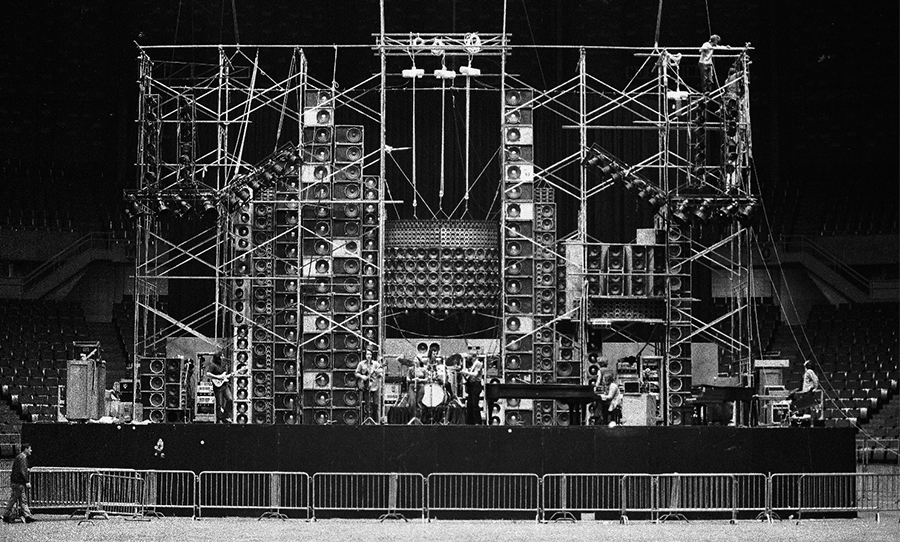Because the "true" complaint about bands being "too loud" ismore related to frequency, not just volume. There are also the studies in the 60s & 70s that show that aesthetically, humans prefer LIMITED frequency range when amplification is involved. If it's an orchestra, sure, 20-20k. It's very interesting. And I doubt the human ear has "evolved" that much since then. I think the "advances" in PAs & the whole "complete even reproduction of all frequencies" is the bigger issue.
In answer to guitar/bass problems specifically, I think we only need ask two questions of that "sound engineer" (which, engineers have degrees): what am I actually drowning out? & Fo I sound like shit? If the answer to those is "nothing" and "no," then "let my rig do its job!" A real sound guy should be able to articulate what is too loud, what frequencies, & have more than just "I can't control you" in his comeback line.
If there is a specifically made piece of gear made for amplifying an instrument (GUITAR AMPLIFIER?) then it should be used before the "all purpose utility flunky amp system" is applied. And good golly bass sounds like butt-ass-crap straight through a PA. Electric gyitars sound worse.
*** I know others have sifferent opinions. If they articulate them, I won't argue. Please don't argue with mine. A simple thumb in either direction will suffice. Just not in the eye!)
Justin & Jusrin
In answer to guitar/bass problems specifically, I think we only need ask two questions of that "sound engineer" (which, engineers have degrees): what am I actually drowning out? & Fo I sound like shit? If the answer to those is "nothing" and "no," then "let my rig do its job!" A real sound guy should be able to articulate what is too loud, what frequencies, & have more than just "I can't control you" in his comeback line.
If there is a specifically made piece of gear made for amplifying an instrument (GUITAR AMPLIFIER?) then it should be used before the "all purpose utility flunky amp system" is applied. And good golly bass sounds like butt-ass-crap straight through a PA. Electric gyitars sound worse.
*** I know others have sifferent opinions. If they articulate them, I won't argue. Please don't argue with mine. A simple thumb in either direction will suffice. Just not in the eye!)
Justin & Jusrin



Comment